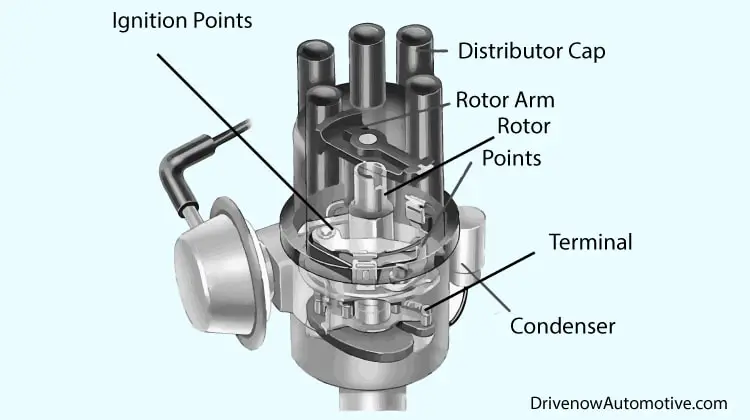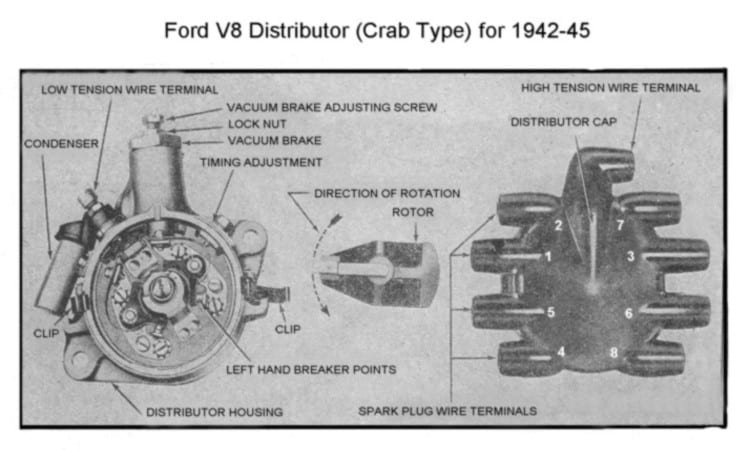The spark plugs in your vehicle’s engine should be replaced after approximately 80,000 miles. However, if your engine uses ceramic plugs, you can go for up to 100,000 miles. Regardless of the type of plugs used in your engine, you will have to replace them at some point.
But replacing spark plugs involves more than just inserting them inside the spark plug hole. The plugs should be wired correctly before firing up the engine. Spark plugs wires have a relatively simple job, transferring high-voltage electric current to the spark plug from the ignition coil.
Therefore knowing how to put spark plug wires in the correct order is critical if you want to replace the spark plugs yourself. Other times only the spark plug wires will require replacing, so knowing when to change spark plug wires is also important.
And if done wrongly, then your engine will fail to start. Here is a step-by-step guide on
How To Put Spark Plug Wires In The Correct Order
Use a car owner’s manual
One of the best places to start the spark plug wire replacement process is in the pages of your car repair manual. This manual will give you a general guide on how to assemble spark plug wires. More importantly, the manual will contain a diagram of a spark plug as well as a Spark plug wire diagram.
So if you own a Chevy 350, then the vehicle manual will show the spark plug wire diagram chevy 350 and the chevy 350 spark plug wire order.
Check the distributor rotor rotation.
The distributor cap is a round part that houses all the spark plug wire connections. This part is held securely by two latches that a screwdriver can remove. Under the distributor cap is the distributor rotor.

The latter is a smaller part that turns every time the crankshaft turns. Cranking it will reveal in which direction the rotor turns. The rotor can either rotate in a clockwise or anticlockwise direction. Check the direction of rotation, whether it’s clockwise or anticlockwise.

Locate the first firing terminal
The distributor cap has four terminals that are meant to connect to each spark plug. The Number 1 spark plug distributor cap links to the first spark plug and will most likely be marked. You can also use the vehicle manual to identify the first terminal if it is not marked.
Connect the first wire to the first cylinder
Each of the four spark plugs is usually housed inside a cylinder. The wire marked as the first should be connected to the first cylinder. This is also usually marked. You can check your car manual for the cylinder block numbering format if it is not marked.
On most Chevy V8 engines, the cylinders are numbered 1-3-5-7 located on the driver’s side, with cylinders 2-4-6-8 being located on the passenger side. On four-cylinder engines, the cylinders are numbered 1-2-3-4, with the first being located closest to the front of the engine.
Connect all the spark plug wires
After connecting the first wire to the first cylinder, the next step is to connect the remaining three to their respective cylinders. To do this, you will want to know the firing order, which can vary between vehicle engines.
Turn the distributor rotor once and check where it lands. If it lands on terminal three, connect terminal three to the third cylinder. The next wire terminal should be connected to spark plug two while the last is connected to spark plug 4.
One of the easiest ways of getting the spark plug wire order right is to replace each at times. First, use a spark plug wire removal tool to remove the old wire from the spark plug and distributor cap. Next, replace it with a new one.
Repeat this process for all the four spark plugs.
How to check a spark plug wire
Spark plug wires get high voltages flowing through them and require insulation. And this is where spark plug wire insulator boots come in handy. These insulator boots prevent the voltage from jumping off the wire before getting to the spark plug.
However, in spite of their insulation, spark plug wires work in such harsh environments that they are always vulnerable to damage. As such, it is important to check the wires for damage.
So how to check a spark plug wire?
Physical inspection:
- Remove the wires and wipe them with a clean cloth.
- Next, inspect each wire individually for scorch marks, cuts, and other physical damage.
- Check for corrosion between the wire insulation boot, the spark plug, and the coil.
- Check also the spring clips that connect the wires to the distributor caps. If the wires have no physical damage on them, move to the next text.
Turn the engine on:
- Turn the engine and check for electrical arcs around the wire.
- Listen for any snapping sounds that will indicate voltage leakage.
- Do not touch the wires to avoid electrical shocks.
Resistance test:
- Use a multimeter to test each wire’s resistance.
- Set the multimeter to the manufacturer’s guidelines.
- Measure each wire by placing the wires on the appropriate probes ensuring they touch the metal contacts. If the reading is within the manufacturer’s guidelines, the wire can be returned.
How To Tell Which Spark Plug Wire Goes Where
Spark plug wires are supposed to be connected to the corresponding correct spark plug housed within the cylinder. As such, the first is to be connected to the first cylinder, and the second, third and fourth. However, the firing order will be different.
In four-cylinder engines, the spark plug firing order is usually 1,3,4, and 2. However, this can vary depending on the vehicle, with some having a firing order of 1,3,2,4 and 1,2,4,3. Ideally, the number one cylinder will be directly in line with the first terminal.
On most chevy’s, the number 1 terminal is usually at the 5 o’clock position, and the number two is to its left. Thus if you check the 350 spark plug wire diagram or Spark Plugs For 5.4 Triton wire diagram on your car manual, you will know which wire is number one, two, three, and four.
Frequently Asked Questions
Where are spark plug wires located?
The spark plug wires are located on the cylinder head next to the valve covers. The other end of the cables is connected to the distributor cap or ignition coils. Older car models feature a distributor cap, with newer models featuring ignition coils.
What will happen if I put spark plug wires incorrectly?
Spark plugs fire one at a time and are timed to fire precisely when needed. So what happens when you put the wires wrong? For example, if you connect the first wire to the fourth cylinder? The fourth spark plug will fire at the wrong time. This will lead to misfires in the cylinder resulting in unburned fuel. The unburned fuel will flow through the exhaust damaging the CAT and 02 sensors. If two or more wires are wrongly fitted, then the engine will not start. In a nutshell, Spark plug wires’ wrong firing order will result in engine misfires, leading to more damage to other engine parts.
Can You Mix Different Brand Spark Plug Wires?
Yes, manufacturers cross-reference their plugs with other brands to be interchangeable with wires from other manufacturers. Thus sticking to one brand of spark plug wires will be purely a matter of choice and preference.
Do spark plug wires have numbers on them?
In most cases, spark plug wires have numbers on them. However, in case they are not numbered, you can use their varying lengths to guide you. Alternatively, you can use your vehicle owner’s manual to check the correct configuration of the wires.
How do I know if my spark plug wires are crossed?
When one or two wires are crossed, then the engine will not start. But if it does start, it will start roughly due to the mistimed firing of the spark plugs.
Conclusion
Spark plug wires are vulnerable to wear and tear caused by the high voltage that passes through them. As such, over time, it will be vital for you to replace the wires with new ones. Knowing how to put spark plug wires in the correct order will be crucial.
Incorrect wiring can lead to more damage to your vehicle. Therefore, it is essential to check the correct number of the wires and the cylinders when installing new cables.
Last Updated on July 27, 2025 by Rifen

I don’t know the firing order to my 2014 vw jetta s 2.0
The firing order of your 2014 VW Jetta s 2.0 would be 1-3-4-2
I hope that will help.
I have a question about how to properly connect the plug wires from the numbered cylinders going to the distributor cap, if anyone can help me please let me know the proper way of connecting them. It’s a 1995 Ford-F-150, V8, 5.8 litre engine
Locate the distributor cap, which is usually at the top of the engine and has multiple wires coming out of it. The cap should have numbers indicating the cylinder connections.
Identify the number 1 cylinder on the engine. On the Ford 5.8L V8, the number 1 cylinder is located at the front of the engine on the passenger side.
Find the number 1 terminal on the distributor cap. This is usually marked with a “1” or a small notch. If you can’t find it, consult your vehicle’s service manual for the exact location.
Connect the plug wire from the number 1 cylinder to the number 1 terminal on the distributor cap.
Moving clockwise around the distributor cap, connect the remaining plug wires to their corresponding terminals in the following order: 3-7-2-6-5-4-8. Make sure to route the wires neatly and avoid crossing them, as this can cause misfires.
Double-check your connections to ensure that all the plug wires are connected to the correct terminals on the distributor cap.
Once you’ve verified that everything is connected correctly, start your engine and listen for any unusual noises or misfires. If you notice any issues, recheck your connections and make any necessary adjustments.
By following these steps, you should be able to properly connect the plug wires on your 1995 Ford F-150 with a 5.8L V8 engine. Remember, it’s essential to follow the firing order and connect the wires correctly to ensure optimal engine performance and prevent any potential damage.